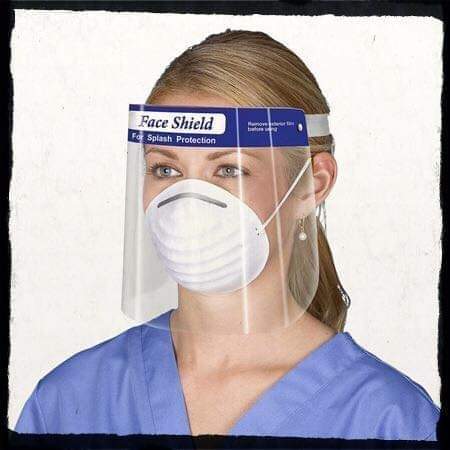ارتداء دروع الوجه يقي من الاصابه بڤيروس الكورونا

يُعتقد أن انتقال الفيروس التاجي الجديد يتم عن طريق الرذاذ التنفسي respiratory droplets , وقد يلعب النقل الجوي airborne transmission دوراً ايضاً. تم اقتراح ان دروع الوجه face shields قد تمنع انتقال العدوى في المجتمع ، ولكن لايوجد دراسات كافيه لدعم ذالك. استقصى الباحثون في هذه الدراسه جدوى ارتداء دروع الوجه في منع انتقال العدوى في بيئة مجتمعية.
تم توظيف 62 عاملاً في المجتمع في مدينه في الهند لإجراء زيارات منزلية لتقديم المشورة للمخالطين الأسريين لمرضى ثبت إصابتهم بفيروس SARS-CoV-2. ارتدى جميع العمال أقنعة الوجه وغيرها من معدات الحماية الشخصية بما في ذلك فرك اليدين بالكحول ، والأقنعة الجراحية ثلاثية الطبقات ، والقفازات ، وأغطية الأحذية. طُلب من أفراد الأسرة ارتداء أقنعة الوجه أثناء المحادثة. بعد زيارة 5880 منزلاً ، أصيب 19٪ (12 من 62) من هؤلاء العمال بالعدوى خلال الفترة الأولية ، وظهرت أعراض على 8 (حمى ، سعال ، التهاب الحلق ، ألم عضلي ، فقدان حاسة الشم) و 4 لم تظهر عليهم أعراض. بعد إصابة هؤلاء العمال ، بدأ باقي العمال في ارتداء دروع للوجه. بعد استعمال دروع الوجه ، واصل 50 عاملاً (غير مصابين سابقًا) تقديم المشورة ، وقد زاروا 18228 منزلاً.
بعد إدخال دروع الوجه ، تم فحص العمال بحثًا عن الأعراض وإجراء اختبارات تفاعل الPCR أسبوعياً. بعد إضافة دروع الوجه ، لم يكن هناك أي اصابه في اي من العمال الخمسين. فى الختام لم تجد هذه الدراسة أي إصابات بـ SARS-CoV-2 بين العاملين الصحيين المجتمعيين بعد إضافة واقيات الوجه إلى معدات الحماية الشخصية المعتادة. تسلط الدراسة الضوء على أهمية إضافة درع للوجه لتوفير أقصى حماية من الاصابه بفيروس الكورونا.
https://jamanetwork.com/journals/jama/fullarticle/2769693
Face shield protects from infection with the coronavirus
transmission of the novel coronavirus is believed to be through respiratory droplets. Airborne transmission may also play a role. Face shields have been proposed to prevent transmission in the community, but data are lacking. Researchers describe transmission in a community setting before and after the use of face shields.
62 Community workers in India were assigned to conduct home visits to counsel asymptomatic family contacts
of patients who had tested positive for SARS-CoV-2. All workers wore face masks and other personal protective equipment including alcohol hand rub, 3-layered surgical masks, gloves, and shoe covers. Family members were asked to wear face masks during the conversation. After visiting 5880 homes,
19% (12 of 62) of these workers got infected during the initial period, 8 developed symptoms (fever, cough, sore throat, myalgia, and anosmia) and 4 were asymptomatic. After the infection of those workers, the remaining of the workers started to also wear face shields. After the introduction of face shields, 50 workers (previously uninfected) continued to provide counseling, visiting 18 228 homes. Workers were screened for symptoms and had PCR tests performed weekly. After face shields were added, no workers tested positive. In conclusion
This study found no SARS-CoV-2 infections among community health workers after the addition of face shields to the usual personal protective equipment. The study highlights the importance of adding face shield for maximum protection of the coronavirus. (JAMA research letter)
د.سوسن جلعوط اختصاصية جراحه نساييه وتوليد